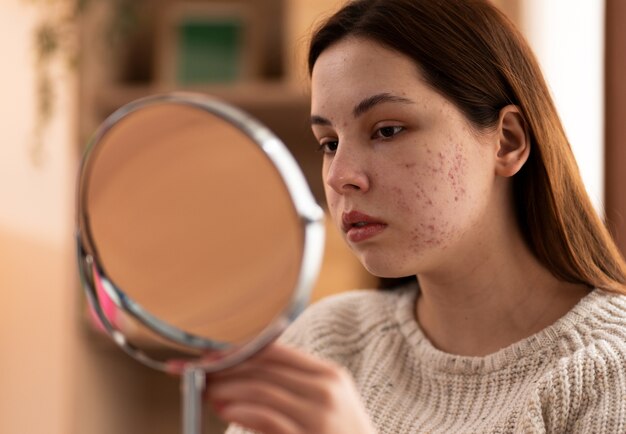Introduction to Omicron Variant
After the identification of the Omicron variant of the COVID-19 virus late last year, the world is on edge with the race against time to stop its spread. Identified in the first case in Botswana and South Africa, since then, the variant has rapidly spread to many parts of the world, causing concern with its many mutations that indicate increased transmissibility and possible impacts on vaccine efficacy.
rajkot update news this symptom of omicron appears only on the skin
Overview of Omicron Symptoms
In addition to the typical presentations of COVID-19, such as fever, cough, and fatigue, reports have described some atypical symptoms associated with the Omicron variant. These symptoms range from mild to severe and differ from what has been reported to date, which makes identifying and managing the variant likely much more challenging than in the previous strains.
Understanding Skin Symptoms of Omicron
Among the milder phenomena related to Omicron is the impact on the skin. In those affected by it, the skin may show anything, from a rash and hives to discoloration. The skin symptoms could be the first sign of the infection, or it could show up alongside traditional respiratory symptoms.
Specifics on the Skin Symptoms Showed in Rajkot
The healthcare practitioners reported there was an increase in cases that displayed Omicron-related symptoms that largely cropped up as skin symptoms in the city of Rajkot in the Indian state of Gujarat. Skin Symptoms Recognition Importance
Local hospitals and clinics have recorded cases of many patients who have reported to the hospital due to unusual complaints such as rashes and skin sores in large numbers.
It will be wise to be on the lookout for the skin symptoms for Omicron and hence take early detection and proper management. There should, therefore, be proper identification of such manifestations by healthcare providers and the public, especially those from areas with an outbreak or a case surge.
How Skin Symptoms Differ from Other Omicron Symptoms
The skin manifestations of Omicron, in contrast to the traditional symptoms associated with respiratory health, would also represent in subtler manner and might go unnoticed or even be mistaken for an already prevailing dermatologic condition. Therefore, such a differential must be drawn between the skin symptoms that would be related to COVID and unrelated issues so that the control of the virus can be achieved and the right treatment be given.
Possible Causes of Skin Symptoms in Omicron Patients
The specific mechanisms in the skin symptoms in Omicron patients are still under scrutiny, but the interaction between the virus and immune and inflammatory responses is thought to be involved in dermal manifestations. Co-morbidities and genetic factors may also have a role in the severity and presentation of skin symptoms.
Diagnosing Skin Symptoms
Diagnosis of skin symptoms related to Omicron is a comprehensive examination that has to be done by healthcare personnel, which includes taking detailed history, examination, performing specific laboratory tests, and in some cases, taking consultations from dermatologists. Rapid antigen tests (RAT) and polymerase chain reaction (PCR) tests are confirmatory tests when suspecting a virus.
Omicron Skin Symptoms Treatment Approaches
Care for Omicron skin symptoms is in most cases by way of supportive care and medications. Drugs used could be antihistamines, corticosteroids, and topical agents for the mitigation of itching, inflammation, and pain. Hospitalization and intravenous medications would, however, be needed for severe cases.
Preventive Measures
Apart from the usual preventive measures such as masking, handwashing, and vaccination, people need to also practice skin health. Keeping away from irritants, keeping adequately hydrated, and following good skincare routines will help in avoiding the symptoms that accompany Omicron.
Public Health Response in Rajkot
The Rajkot administration has chalked out measures to arrest the Omicron outbreak and deal with the surge in cases. They include ramping up the test and vaccination capacity, expanding the healthcare infrastructure, and supporting the affected people and their community.
Challenges in Managing Skin Symptoms
High efforts in managing the skin symptoms of Omicron variant disease, however, are outweighed by novelty and little information available for data, on its dermatological effects, which dictate the appropriate vigilance and adaptability are maintained among health care providers in the face of evolving patient needs.
Research and Development Efforts
Real-life Cases and Testimonials.
Researchers and pharmaceutical companies are closely studying the Omicron variant to know its traits and also design specific interventions. Clinical trials looking at the ability of existing treatments and vaccines to respond to Omicron are ongoing, and results have been positive.
Real-life experiences of the Omicron skin symptom encounters will be able to provide great insights into what people actually face with this novel challenge of the virus. In turn, such stories would bring to the fore the essence of early detection, timely intervention, and community support in winning against challenges that the pandemic presents.
Conclusion
In conclusion, the skin symptoms related to the Omicron variant contribute to the new spectrum in understanding COVID-19. Surely, all the necessary information on the virus, the observance of preventive measures, and the timely attendance of medical checkups will reduce the consequences and risks and help us and the surrounding people to remain safe.
